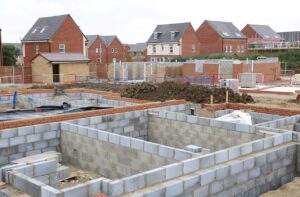How Construction Impacts Biodiversity


All construction projects have the potential to damage and disrupt the natural environment, whether that is directly at the construction site, or indirectly through the materials used. Construction can impact the environment in many different ways, from threatening wildlife and plant species to polluting the surroundings with industrial waste and the production of construction tools and materials. Where wildlife and plants are concerned, construction can cause disruption to species and harm, injure or displace them. All of this can have a detrimental effect on the essential biodiversity of the area. But what is biodiversity, why is it so important, and how does construction have a negative impact on it?
What is Biodiversity?
Essentially, biodiversity is the variety of life on Earth and how this life interacts. Biodiversity is a broad and complex feature of our planet, but one that is absolutely vital. It consists of different levels, from the genes and individual species to communities of creatures and entire ecosystems like forests, jungles and coral reefs. An area with high biodiversity has thousands, if not millions, of creatures, plants and organisms all living in the same area and interacting with one other to survive and thrive. The rainforest in Brazil is thought to have the highest biodiversity in the world; generally, you find much higher biodiversity in the warm climates around the equator.
Why is Biodiversity Important?
The air we breathe, the food we eat and the water we drink all relies on biodiversity; we need it to live. Plants create the oxygen we breathe, bees pollinate plants to give us fruits, nuts and grains, wildlife spread the seeds so the cycle can continue and we can survive. Biodiversity creates the circle of life, without which we cannot harness the services nature provides us. Decreased biodiversity creates risks for global food security, increases the likelihood of transmission of diseases and will result in areas being more vulnerable to flooding.
Indicators of Biodiversity
When considering the links of biodiversity and construction, there are three main indicators that are used: product production, construction process and area of habitat retained or created. These indicators include checklists and scales that are completed before, during and after the construction process in order to gauge how the project has impacted biodiversity.
Biodiversity Net Gain
As biodiversity is so important, the concept of Biodiversity Net Gain has been developed to ensure that biodiversity is an element that is taken into consideration when designing, planning and undergoing construction. It hopes to push developments to maintain the environment and leave it in a better state than before the construction started. Instead of nature and infrastructure going head-to-head, it promotes designs and processes that benefit the environment. It comprises of avoiding and minimising biodiversity loss and remediating and offsetting losses to give an overall biodiversity gain. The government is soon to bring in mandatory biodiversity net gain percentages for construction projects, and many local authorities already stipulate it. This is why getting a professional like Biodiversity Net Gain Plan to assess and plan your project for you is a good idea, since you can be certain that you meet the requirements. These trained ecological consultants will have your plan with you in three easy steps so you can continue your building work with peace of mind. Visit their blog for a helpful guide on understanding biodiversity net gain. But how does construction have such a negative effect on the environment and biodiversity exactly?
On Construction Sites
At designated construction sites, one of the biggest impacts is on protected species. Bats, badgers and crested newts are the most common species to cause delays and disruption to building works, along with some key bird species, as there are laws that state they cannot be harmed, disrupted or moved. These species are essential for the biodiversity of the area, and the areas they are found in may be key breeding or feeding sites. For work to continue, these species have to be relocated professionally, impacting the areas biodiversity.
Off-Site Impacts
Often, the off-site impacts of construction are indirect, and are therefore overlooked by construction workers as they are not immediately obvious. Key off-site environmental impacts include air and water pollution, disturbances, increased risk of fire, and operations, including the creation of access roads and the use of large heavy vehicles. All of these can lead to the displacement of specific species, which can then have a knock-on effect to other species in the area, decreasing overall biodiversity.
Disturbance and Fragmentation
To be able to construct, you need land to build on. But this land is probably home to a number of species of animals and plants. Consequently, their habitats are destroyed to make way for infrastructure. This is a direct impact of construction on biodiversity, but there are many more subtle ones too. Construction sites generate a lot of noise and light, which may not directly affect the animals, but could impact breeding and feeding behaviours, which may have an effect on future population numbers. This disturbance may also cause them to relocate to another area, reducing biodiversity around the construction site. Erecting buildings could cause habitats and species that usually rely on each other to be separated. Fragmenting species and habitats has a huge impact on the dynamics of the ecosystem and can cause declines in population species and biodiversity.
Sourcing Materials
Materials used in construction are taken from the environment. Trees are grown to be cut down and used as timber, rocks are made through natural environmental processes, as is sand, and some materials are taken from deep within the earth. All of these production processes have a negative environmental impact and can decrease an areas biodiversity. Entire forests are chopped down for timber; imagine the number of species that no longer have a home. In order to retrieve materials out of the ground, entire areas are literally turned upside down, displacing a number of species of both plants and animals and having a negative effect on biodiversity.
Construction is potentially one of the most impactful industries on the environment, and not in a good way. The industry has a huge role to play in minimising and reducing environmental impacts and implementing biodiversity net gain is a step in the right direction.


